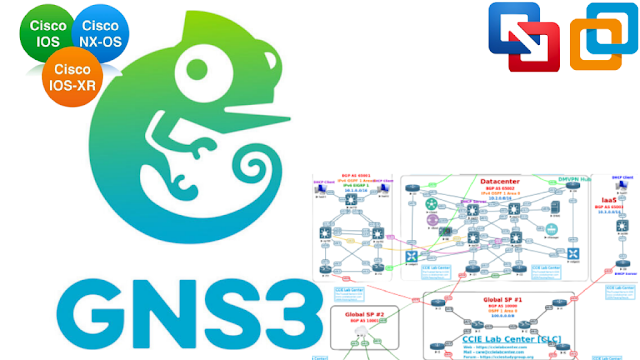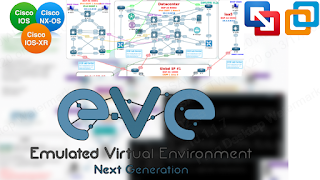How to get eve ng internet access?
Graphical network emulators EVE-NG and UNetLab handle both for-pay and free router images. The network emulator's most recent, stable version is called UNetLab, and its alpha release, called EVE-NG, is an improved version of the same application. Windows, Mac OS, and Linux machines can all be configured to use the UNetLab/EVE-NG network emulator because it operates in a virtual machine. for eve ng internet access, you have to do some setting. Running in a web browser is its graphical user interface. Users of other operating systems can find helpful instructions from the EVE-NG development team on how to set it up on Windows (Setup, Integration) or Mac OS (Setup, Intergration).
The following procedures must be followed in order to install the EVE-NG (or UNetLab) virtual machine on a Linux host computer:
●
Configure Wireshark, VNC, and
Telnet to work with EVE-NG
●
Install VMware Player after
downloading it
●
the EVE-NG virtual machine for
download
●
Installing the EVE-NG VM in VMware
Player
●
On the Linux host machine, change
the permissions for the VMware virtual interfaces.
●
Run the automatic setup script
when the EVE-NG VM first starts up.
●
Restart the VM after making
changes to the network interfaces configuration file.
●
Add the pictures you'll be using
to simulate network nodes to the EVE-NG VM.
● An easy network emulation scenario is used to test EVE-NG.
Why EVE-NG instead of UNetLab?
EVE-NG is UNetLab's most recent iteration. UNetLab and EVE-NG are still quite comparable as of the time I published this piece, in addition to the developers updating and reworking the software. UNetLab development, however, has come to an end. Only EVE-NG will receive any fixes for issues discovered in UNetLab. I chose to begin my work with the UNetLab/EVE-NG network emulator by using the most recent version, EVE-NG, even though it is still in alpha. Any changes made to the EVE-NG user interface and any new EVE-NG features will not be back-ported to UNetLab. The campus, branch, and data center networks benefit from the automation, distributed analytics, security, and high availability provided by arubaos cx download.
Set up Telnet, VNC, and Wireshark
The browser may attempt to launch a terminal
window, a VNC session, or even Wireshark to capture network traffic from one of
the node's interfaces when you click on a node in the EVE-NG user interface. As
a first step, we will install programs that EVE-NG uses when interacting with
nodes and we will integrate new protocol handlers into the Internet browser. We
need to configure the browser to use the custom protocol handlers used by
EVE-NG, such as "telnet:/* and capture:/, so it can launch these programs
with the correct parameters to support requests from the EVE-NG virtual
machine. In this instance, I'm using Firefox, but the process should work with
other browsers as well.



Comments
Post a Comment